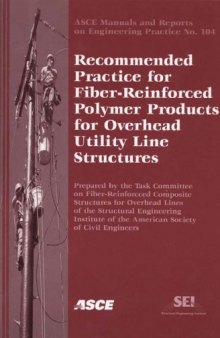 جزییات کتاب
جزییات کتاب
This manual details best practices for the use of fiber-reinforced polymer (FRP) products in conductor support applications and FRP poles. Advancements and innovations in FRP and process technologies have resulted in lightweight high-strength FRP materials that are more cost-competitive with traditional construction materials such as wood, steel, and prestressed concrete. In addition to a description of the advancements and innovations, the differences in performance between FRP structures and wood, steel, or prestressed concrete are also explained. FRP materials are used widely in many applications because they can be engineered to offer important advantages over traditional materials and also offer product engineers extraordinary design latitude. Engineers can choose from a wide range of material systems and processing techniques. FRP structures fall into one of five basic configurations: Cantilevered structures; Guyed structures; Framed structures; Combined structures; and Latticed tower structures. The manual recommends and provides suggested guidelines for Performance-Based Tests for all FRP poles. It also discusses factors that could affect the performance of FRP poles after installation, suggests field inspection methods, and provides basic maintenance and field repair techniques that can be used to extend the life of FRP poles: Environment, UV Radiation, Temperature, Moisture, Ice and Snow Accumulations, Fire, Chemical Exposure, Biodegradation, Mechanical Fatigue, and Electrical Stress and Leakage Current



 دانلود کتاب
دانلود کتاب

 جزییات کتاب
جزییات کتاب

 این کتاب رو مطالعه کردید؟ نظر شما چیست؟
این کتاب رو مطالعه کردید؟ نظر شما چیست؟
